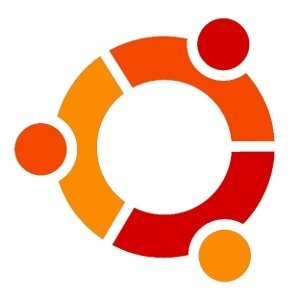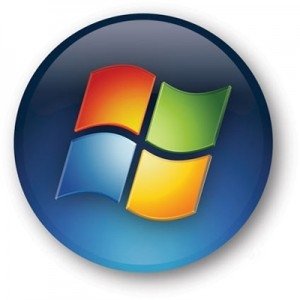Battle of the (Desktop/Laptop) OS's
534 views,
2 reactions and
1 comments

The never-ending battle of the desktop/laptop operating systems wages on! Which one do you think deserves to be KOTW?
Ubuntu 9.10 (Karmic Koala), was released on 29 October 2009 and is Canonical's eleventh release of the distribution and will be supported until April 2011.
In an announcement to the community on 20 February 2009, Mark Shuttleworth explained that 9.10 would focus on improvements in cloud computing on the server using Eucalyptus, further improvements in boot speed as well as development on the Netbook Remix.
The initial announcement of version 9.10 indicated that this release might include a new theme, however the project has been moved forward to 10.04, and only minor revisions have been made to the default theme. Other graphical improvements include a new set of boot up and shutdown splash screens, a new login screen that transitions seamlessly into the desktop, and greatly improved performance on Intel graphics chipsets.
In June 2009 Canonical created the One Hundred Paper Cuts project, focusing developers to fix minor usability issues. A paper cut is defined as: "a trivially fixable usability bug that the average user would encounter on his/her first day of using a brand new installation of the latest version of Ubuntu Desktop Edition."
The desktop installation of Ubuntu 9.10 includes, among other programs, GIMP 2.6, GNOME 2.28, Mozilla Firefox 3.5, OpenOffice.org 3.1, Linux 2.6.31, X.Org 7.5 and Empathy Instant Messenger instead of Pidgin. The default filesystem is ext4, and the Ubuntu One client, which interfaces with Canonical's new online storage system, is installed by default. It also debuts a new application called the Ubuntu Software Center that unifies package management. Canonical intends for this application to replace Add/Remove Programs (gnome-app-install) in 9.10 and possibly Synaptic, Software Sources, Gdebi and Update Manager in Ubuntu 10.04. Karmic Koala also includes a slideshow during the installation process (through ubiquity-slideshow) that highlights applications and features in Ubuntu.
In an announcement to the community on 20 February 2009, Mark Shuttleworth explained that 9.10 would focus on improvements in cloud computing on the server using Eucalyptus, further improvements in boot speed as well as development on the Netbook Remix.
The initial announcement of version 9.10 indicated that this release might include a new theme, however the project has been moved forward to 10.04, and only minor revisions have been made to the default theme. Other graphical improvements include a new set of boot up and shutdown splash screens, a new login screen that transitions seamlessly into the desktop, and greatly improved performance on Intel graphics chipsets.
In June 2009 Canonical created the One Hundred Paper Cuts project, focusing developers to fix minor usability issues. A paper cut is defined as: "a trivially fixable usability bug that the average user would encounter on his/her first day of using a brand new installation of the latest version of Ubuntu Desktop Edition."
The desktop installation of Ubuntu 9.10 includes, among other programs, GIMP 2.6, GNOME 2.28, Mozilla Firefox 3.5, OpenOffice.org 3.1, Linux 2.6.31, X.Org 7.5 and Empathy Instant Messenger instead of Pidgin. The default filesystem is ext4, and the Ubuntu One client, which interfaces with Canonical's new online storage system, is installed by default. It also debuts a new application called the Ubuntu Software Center that unifies package management. Canonical intends for this application to replace Add/Remove Programs (gnome-app-install) in 9.10 and possibly Synaptic, Software Sources, Gdebi and Update Manager in Ubuntu 10.04. Karmic Koala also includes a slideshow during the installation process (through ubiquity-slideshow) that highlights applications and features in Ubuntu.

Mac OS X v10.6 "Snow Leopard" was released on August 28, 2009. Rather than delivering big changes to the appearance and end user functionality like the previous releases of Mac OS X, Snow Leopard focuses on under the hood changes, supposedly increasing the speed, efficiency, and stability of the operating system. For most users, the most noticeable changes are: the disk space that the operating system frees up after a clean install compared to Mac OS X 10.5 Leopard, a more responsive Finder rewritten in Cocoa, faster Time Machine backups, more reliable and user friendly disk ejects, a more powerful version of the Preview application, as well as a faster Safari web browser.
The rewrite of Finder in Apple's native Cocoa API allow the Finder to take advantage of the integrated 64-bit technology as well as Grand Central Dispatch, use a more user-friendly disk eject (clearer dialogs will notify the user of what services or programs are using a given disk), and provides it a more responsive feel overall.
The new Safari 4 includes a boost in JavaScript and HTML performance, which results in faster web browsing. The majority of this performance boost is enabled by the new SquirrelFish JavaScript interpreter, improving the JavaScript rendering speed of Safari by over 50%. The new Top Sites also displays the most frequently visited and/or bookmarked sites in a panorama view, allowing the user to easily access their favorite sites along with a new Cover Flow view for the user's browsing history. Safari 4 is now also more crash resistant, being able to isolate plug-ins which are the number one cause of web browser crashes.
Mac OS X v10.6 also features Microsoft Exchange Server support for Mail, iCal, and Address Book, new 64-bit technology capable of supporting greater amounts of RAM, an all new QuickTime X with a refreshed user interface and more functionality that used to be only available to Quicktime Pro owners.
Back-end platform changes include improved support for multi-core processors through Grand Central Dispatch which attempts to ease the development of applications with multi-core support, and thus improve their CPU utilization. It used to be that developers needed to code their programs in such a way that their software would explicitly take advantage of the multiple cores, which could easily become a tedious and troublesome task, especially in complex software. It also includes advanced GPU performance with OpenCL (a cross platform open standard for GPGPU distinct from CUDA, Dx11 Compute Shader or STREAM) by providing support to offload work normally only destined for a CPU to the graphic card's GPU. This can be especially useful in tasks that can be heavily parallelized.
Snow Leopard supports only machines with Intel CPUs, requires at least 1 GB of RAM, and drops default support for applications built only for the PowerPC architecture (Rosetta can be installed as an additional component to retain support for PowerPC-only applications).
The rewrite of Finder in Apple's native Cocoa API allow the Finder to take advantage of the integrated 64-bit technology as well as Grand Central Dispatch, use a more user-friendly disk eject (clearer dialogs will notify the user of what services or programs are using a given disk), and provides it a more responsive feel overall.
The new Safari 4 includes a boost in JavaScript and HTML performance, which results in faster web browsing. The majority of this performance boost is enabled by the new SquirrelFish JavaScript interpreter, improving the JavaScript rendering speed of Safari by over 50%. The new Top Sites also displays the most frequently visited and/or bookmarked sites in a panorama view, allowing the user to easily access their favorite sites along with a new Cover Flow view for the user's browsing history. Safari 4 is now also more crash resistant, being able to isolate plug-ins which are the number one cause of web browser crashes.
Mac OS X v10.6 also features Microsoft Exchange Server support for Mail, iCal, and Address Book, new 64-bit technology capable of supporting greater amounts of RAM, an all new QuickTime X with a refreshed user interface and more functionality that used to be only available to Quicktime Pro owners.
Back-end platform changes include improved support for multi-core processors through Grand Central Dispatch which attempts to ease the development of applications with multi-core support, and thus improve their CPU utilization. It used to be that developers needed to code their programs in such a way that their software would explicitly take advantage of the multiple cores, which could easily become a tedious and troublesome task, especially in complex software. It also includes advanced GPU performance with OpenCL (a cross platform open standard for GPGPU distinct from CUDA, Dx11 Compute Shader or STREAM) by providing support to offload work normally only destined for a CPU to the graphic card's GPU. This can be especially useful in tasks that can be heavily parallelized.
Snow Leopard supports only machines with Intel CPUs, requires at least 1 GB of RAM, and drops default support for applications built only for the PowerPC architecture (Rosetta can be installed as an additional component to retain support for PowerPC-only applications).

Windows 7 is the latest public release version of Microsoft Windows, a series of operating systems produced by Microsoft for use on personal computers, including home and business desktops, laptops, netbooks, tablet PCs, and media center PCs. Windows 7 was released to manufacturing on July 22, 2009, and reached general retail availability on October 22, 2009, less than three years after the release of its predecessor, Windows Vista. Windows 7's server counterpart, Windows Server 2008 R2, was released at the same time.
Unlike its predecessor, which introduced a large number of new features, Windows 7 was intended to be a more focused, incremental upgrade to the Windows line, with the goal of being fully compatible with applications and hardware with which Windows Vista is already compatible. Presentations given by Microsoft in 2008 focused on multi-touch support, a redesigned Windows Shell with a new taskbar, referred to as the Superbar, a home networking system called HomeGroup, and performance improvements. Some applications that have been included with prior releases of Microsoft Windows, including Windows Calendar, Windows Mail, Windows Movie Maker, and Windows Photo Gallery, are not included in Windows 7; most are instead offered separately as part of the free Windows Live Essentials suite.
Unlike its predecessor, which introduced a large number of new features, Windows 7 was intended to be a more focused, incremental upgrade to the Windows line, with the goal of being fully compatible with applications and hardware with which Windows Vista is already compatible. Presentations given by Microsoft in 2008 focused on multi-touch support, a redesigned Windows Shell with a new taskbar, referred to as the Superbar, a home networking system called HomeGroup, and performance improvements. Some applications that have been included with prior releases of Microsoft Windows, including Windows Calendar, Windows Mail, Windows Movie Maker, and Windows Photo Gallery, are not included in Windows 7; most are instead offered separately as part of the free Windows Live Essentials suite.

More Walls
Funny BabiesYo Momma JokesBest Pick Up LinesSuper GamersCool Dance RoutinesUber Cute Cartoon VideosFunny CommercialsBest World of Warcraft VideosWall of PWNedness Marvel Universe CharactersGrosser than grossThe Best Thanksgiving Side DishesPlaces To Pee Before You DieThe TransformersFavorite Starcraft UnitTop Men's Websites on the InternetGood Meals for Cheap PricesTeam Edward or Team Jacob?Daily ReactionWho's your favorite Glee Character?Best SmartphoneParking FAIL!RSS Powered Windows 7 desktop wallpaper backgroundNaruto ShippudenBest Hollywood Movies (2009)Best All Time Music CollaborationsDouchebag of 2009Best Korean Restaurants in the SF Bay AreaBest Dragon Age Origins Party MemberBest Obama QuotesWho is your favorite of the Jersey Shore?America's Best Dance Crew Season 5The Sonic HedgehogBest Video Game Trailer10 Interesting Jeopardy Game Show FactsMUST EAT Food Spots in PortlandMost Wanted Gadget of the Year 2010Which king would you swear your allegiance to?






Name
Comment